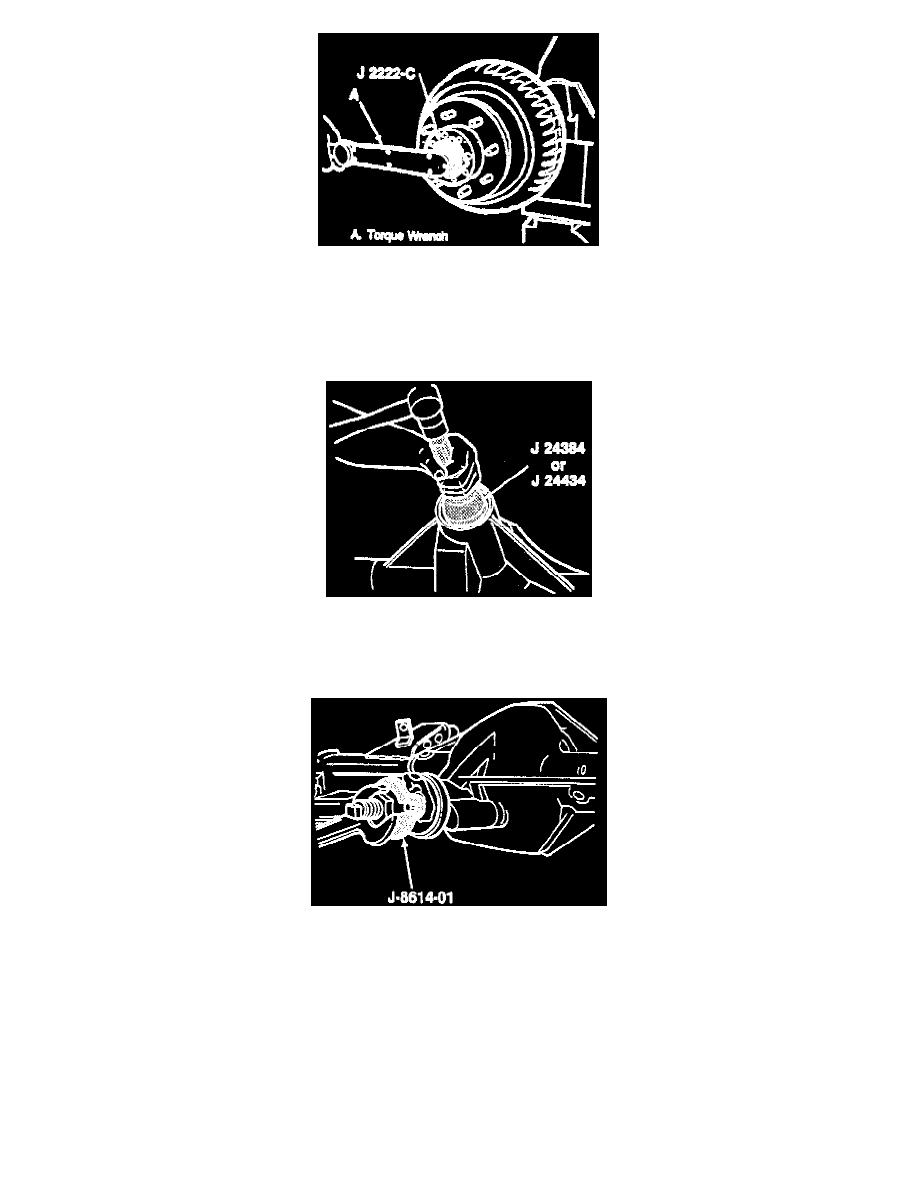Tahoe 4WD V8-393 6.5L DSL Turbo VIN S (1995)

NOTICE: Always use the correct fastener in the proper location. When you replace a fastener, use ONLY the exact part number for that application.
The manufacturer will call out those fasteners that require a replacement after removal. The manufacturer will also call out the fasteners that require
thread lockers or thread sealant. UNLESS OTHERWISE SPECIFIED, do not use supplemental coatings (paints, greases, or other corrosion inhibitors
on threaded fasteners or fastener joint interfaces. Generally, such coatings adversely affect the fastener torque and joint clamping force, and may
damage the fastener. When you install fasteners, use the correct tightening sequence and specifications. Following these instructions can help you
avoid damage to parts and systems.
1. Oil seal into the bore using J 24384.
-
Lubricate the inside diameter of the new oil seal with extreme pressure lubricant.
-
Pack the cavity between the pinion stem, pinion flange and pinion nut washer with a non-hardening sealer such as Permatex(R) Type A or
equivalent. Do not coat the bearing.
2. Flange using J 8614.
-
Use marks scribed previously for installation.
3. A new pinion nut, using J 8614-01.
-
Use marks scribed previously for installation.
-
Tighten pinion nut to 596 to 678 Nm (440 to 500 ft. lbs.).
4. Propeller shaft.
